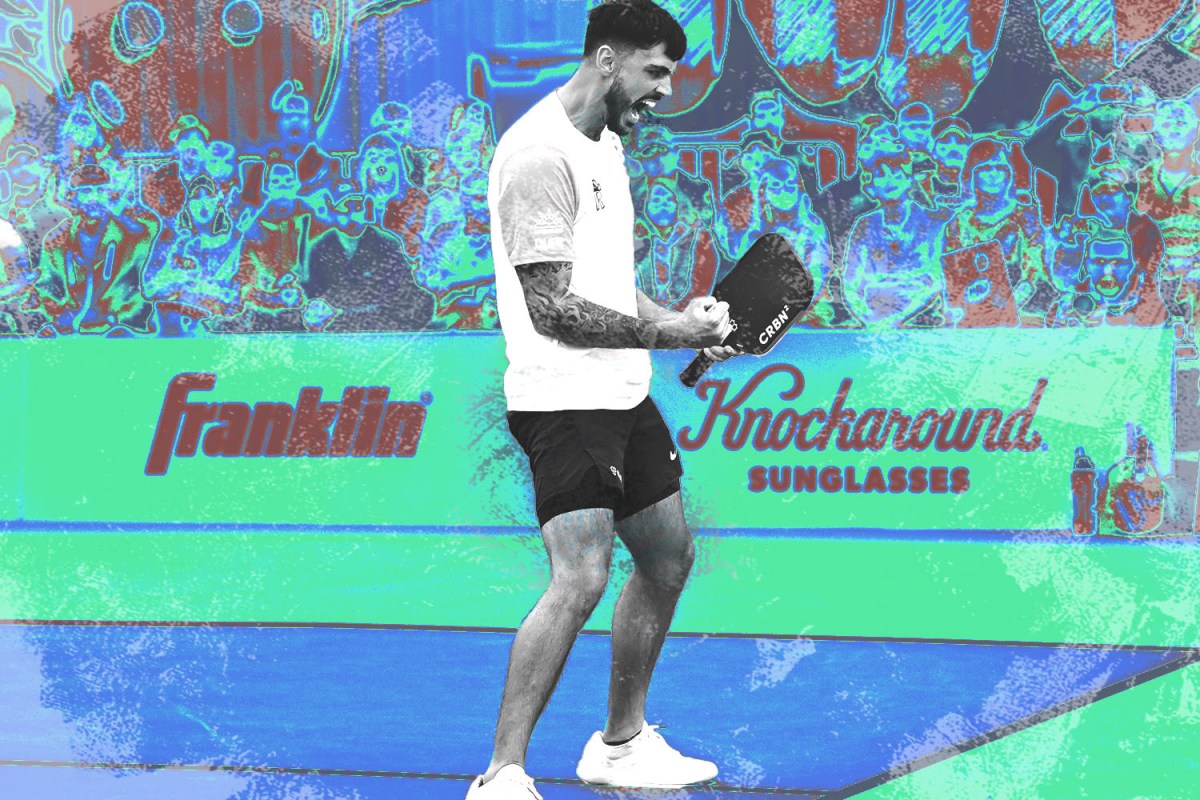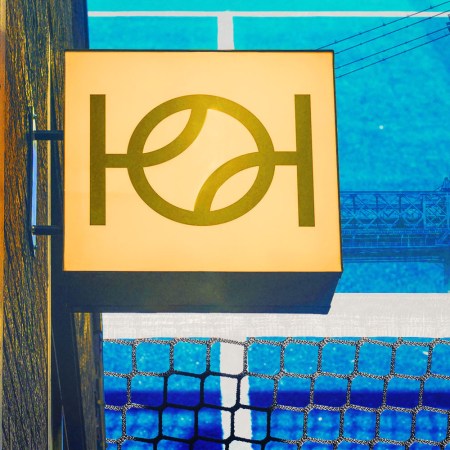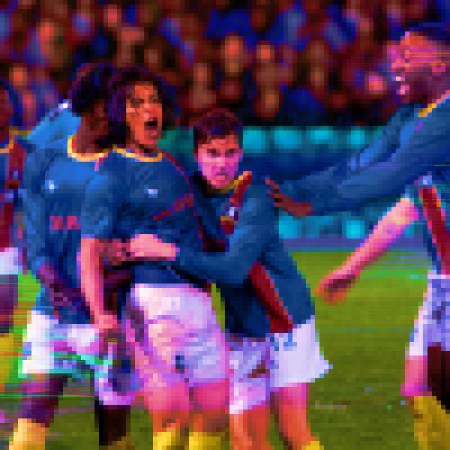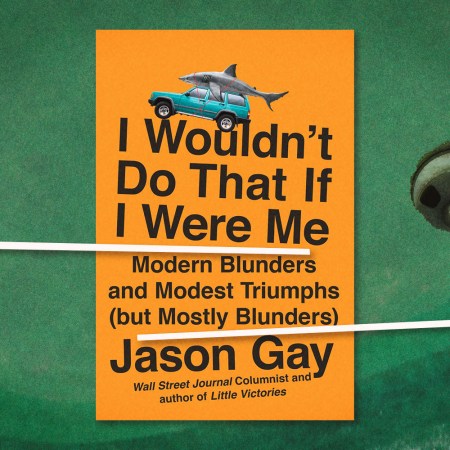I am now, proudly, one of 20,000 human beings to have watched Major League Pickleball’s 2022 championship in Columbus to completion.
Well, that would be in addition to the couple-hundred souls who were actually on the premises at Pickle & Chill Arena that October day: a mixture of the two last-standing quartets, their relatives and coaches, an American-Australian commentating duo, a no-nonsense line judge named Courtney Jonhson, and bays of backwards hat-bedecked owners, who took it upon themselves to rile up the crowd ahead of critical points.
The tournament was the culmination of the most important year in pickleball history — yet oddly, it’s already a relic.
The good-ole MLP isn’t the MLP anymore. It’s the MLP By Margaritaville (“I am happy to be in the same boat with MLP,” winks Jimmy Buffett in a press release) and what used to be 12 teams is soon to be 24, replete with the first promotion-relegation system in North American sports, and a shiny slate of new owners: LeBron James, Tom Brady, Kevin Durant, Drew Brees, Kim Clijsters, Mark Lusry, Gary Vaynerchuk. About a month ago, Anheuser-Busch became the first Fortune 500 company to purchase an MLP team.
To hear league founder — and hedge fund billionaire — Steve Kuhn riff on the future of America’s fastest-growing sport, the lines between the nation’s top talent and whoever runs the “kitchen” at your grandma’s Fort Lauderdale retirement home are actually pretty blurry. But he prefers it that way. By his estimation, either pillar of this movement is symbiotic with the other.
During the Columbus broadcast, the CBS Sports-supported feed cut to Kuhn over a commercial break, and he outlined his vision for the league…which sounded more like a PSA from the Department of Health and Human Services: 40 million American picklers by 2030.
“I really do think pickleball could save America,” he says. “This is a sport that could magically change our country and make it a happier and healthier place. Most pickup courts in a rec league…people are not sorted by gender, they’re not sorted by age. The spirit of the sport is that everyone is welcome. Everyone is invited to come out and do their best. We are not blue or red, old or young. We have more in common than we think. This sport reminds us of that.”
Can pickleball restore the soul of a nation? It’s evidently going to give it its best shot. There are double the number of courts across the country today than there were five years ago, and nearly five million Americans played the game this year, with the average age dropping down to 38.1.
You don’t need to be particularly generous to agree with Kuhn that yes, pickleball is a good thing that brings people together — remember earlier this year, when a PTA mom famously played with a trio of Pittsburgh Steelers at her local, oblivious all the while?
I charted my own experience with the bonanza in a piece earlier this fall, and continue to observe it firsthand. Over dinner with friends a few weeks ago, one of them was spotted by another late-20-something who was on the way to the bathroom…a colleague, I assumed. They asked about each others’ families, then cracked some jokes. A “pickleball friend,” she told me, after she walked away.
The lone community the sport seems doomed to disappoint, ironically, is its big-racquet big-brother. Certain tennis purists aren’t too keen on the pickleball groundswell, which is understandable. (In a New Hampshire town hall meeting earlier this year, one resident apparently declared to the aggrieved tennis-folk: “‘One day these will all be pickleball courts.”)
How about the MLP By Margaritaville side of the equation, though? Will the league actually accelerate engagement with the sport, let alone fill the coffers of its many celebrity investors? Will anyone actually want to sit down to watch these tournaments, or cheer the hardly-household names playing in them? Or is watching pickleball (in spite of all the intrigue and all the investment) akin to spectating Spikeball — something that might hold your interest on a lackluster gameday in a dark bar, but solely as a drunken, one-off novelty, and nothing more?
Instead of waiting months to experience Major League Pickleball live, I took one for the team on a rainy Tuesday and traveled to the capital of Ohio. After two hours of taking in dinks, firefights and the occasional “Erne,” I have some thoughts.
The basics
I had no clue what to expect heading into my very first pickleball-spectating experience. I neglected to conduct any half-assed internet research, preferring to simulate the sensation of someone “stumbling” into the sport. Fortunately, that’s pretty much exactly what the MLP’s broadcast team assumes from its viewers. There’s an explain-it-to-me-like-I’m-six, come-as-you-are sensibility permeating their monologues and graphics.
Each commercial break — in the YouTube-edited version, at least — adds to the pickleball propaganda complex, splicing together montages of the sport’s meteoric rise, or clips of Drew Brees cavorting with SoCal picklers, or background profiles of athletes throughout the league, who are asked to dish on their trustiest shot (e.g. the immutable Irina Tereschenko, lover of the backhand slice).
I quickly learned that a potential upset was brewing. Plucky side Hard Eights, ranked 10th of the 12 teams heading into the tournament, was attempting to take down BLQK — they of the clean-cut black branding and superior DUPR score (Dynamic Universal Pickleball Rating), who had already taken home hardware in Austin earlier in the year. These were the teams:
BLQK
- Rafa Hewett
- Zane Navratil
- Irina Tereschenko
- Paris Todd
Hard Eights
- Andrei Daescu
- Kyle Yates
- Jorja Johnson
- Cierra Gaytan-Leach
I was initially confused — four players to a team? What in the world? But the commentators outlined the stakes before I got too upset. MLP matches are subdivided into a maximum of five separate games, of which three are guaranteed:
- Game 1: female partners versus female partners
- Game 2: male partners versus male partners
- Game 3: mixed partners versus mixed partners
- Game 4: remaining mixed partners versus remaining mixed partners
- DreamBreaker: in the event of a 2-2 tie…singles rotation versus singles rotation until one side wins
In the case of Game 3, the team that wins a coin flip gets to assemble the mixed partners for the other team, then match up accordingly. There’s a somewhat similar situation for the DreamBreaker (which the sport is clearly very proud of — the broadcast team kept pining for a DreamBreaker), in which one team must first disclose their intended singles rotation, and the other will nominate an order that they think gives them the best chance of ending the match once and for all.
If anything of this sounds complicated, chalk it up to poor exposition on my part, not poor game design by the MLP. It is a seamless and straightforward viewing experience, and one, we should add, that actually affirms Kuhn’s vision of pickleball as an inclusive bastion for the country.
Where else, after all, are you likely to see professional athletes of different genders competing, strategizing and celebrating with each other? It’s a refreshing sight at the outset, and then, as the match wears on, one that you start to take for granted in a way that I found very healthy. Each player on each side has their obvious strengths and weaknesses, regardless of their gender, and you can start to pick up on these trends as you settle in for each game.
A spectator sport?
On the whole, I’m a little surprised to share, I actually enjoyed my first brush with MLP By Margaritaville. If you’re squinting at the screen, it capably passes the Does This Professional Sport Deserve To Be On Television Test, which usually includes the following criteria:
- The competitors are regularly accomplishing athletic feats that you cannot
- The degree of talent is dispersed reasonably across either team
- It isn’t impossible for you to memorize the names of the players
- At least one player in the circuit is incapable of controlling their emotions
- There are people who care: commentators, referees, fans, advertisers, guys hawking Snickers
That said — this early in its existence, MLP can sometimes prove a head-scratching viewing experience. In establishing a multi-city tour, the sport’s schedulers and production team should probably prioritize outdoor venues (like this one!), as there isn’t much aesthetic interest to staring at an artificially-lit, satirically-grafitti’d rec space a stone’s throw from the Scioto River.
The league isn’t getting the Goodyear Blimp treatment anytime soon, obviously, and indoor facilities will no doubt propagate throughout the States over the next half-decade. But this sport needs to be shown under blue skies and astride palm trees. An association with sunshine, at least, and a proclivity for filming these championships outside (as opposed to in a room with risers and a wall, which makes it seem like it was filmed by a high school AV club), will give the sport the seasonal branding it needs, and the production some much needed grandeur.
As for the gameplay, it needs to be said: some points are incomprehensibly boring. MLP employs controversial “rally scoring,” which I actually liked (basically, your team can score on any point, whether you served it or not…until the system “freezes” at match point, and only serving teams can score), and in a game to 21, there’s a ton of urgency and ingenuity on the floor when everything’s knotted up, say, at 17.
Sometimes, though, players on either side of the net simply volley it back and forth to each other, over and over again, until one of them hits it into the net. Seriously. The strategy is usually employed to avoid a strong player on the team, or to help a team catch its wind, or maybe, I’m not sure, just to play it cool and avoid making an unnecessary mistake. Whatever the reason, it’s dumb as hell, and I found myself willing the players to engage in what’s called a “firefight” — a sequence of hyperspeed ping-pongs, inevitably punctuated by a devastating forehand flourish.
If you get really lucky, once in a blue moon, a player might even dash outside the field of play and bend the ball around the pole of the net, making use of the pickleball’s wiffled perforations. This play is called an Erne, and it rules. In fact, there’s no shortage of athletic improvisation to be had in key moments: tweeners, returns on slams that seemed impossible, wonky serves, instances where one partner dashes in front of another to save the day. These players are legit, and they flash their talent accordingly.
It’s always interesting to learn their backstories, too. Two of my favorites from the Columbus final are excellent representatives for either pole of the MLP circuit: Tereschenko, just south of her 40th birthday, a lifelong tennis player reinvented, and Johnson, not even old enough to vote, harbinger of a new and inevitable era of specialization, in which certain American youth will turn into pickleball pros before attending the prom. (Johnson had the distinction of defeating her brother en route to the final.)
Consider: when MLP reshuffled last month, redrafting its players to sort them across all the fledgling, celebrity-backed sides, the very first pick of the draft was Anna Leigh Waters…born in 2007. Her bio could’ve been plucked from a Backyard Baseball character — she’s homeschooled by her grandma, she used to play soccer competitively — and yet she claims an overwhelming professional pedigree. Leigh Waters is sponsored by FILA; she made Forbes “30 Under 30”; she travels 24 weeks a year; she’s played pro-ams with the likes of Michael Phelps, Jamie Foxx and Jordan Speith.
In the end, Hard Eights won the first game, then lost the next three (one of them in close fashion), ceding the title to BLQK. It was the franchise’s second Pritchard Cup in three tries, and the four players split $100,000 in winnings. I was kind of pissed. I wanted Hard Eights to win. But I was happy for Hewett, an unexpectedly graceful grizzly of a partner, who I had mentally dubbed “the bad boy of the tour.” He made shot after shot down the stretch, thundering at the crowd as he willed BLQK to victory. Every tour needs one.
What’s next…
If you’re planning to hang out in the “wait and see” camp, where MLP is concerned, I wouldn’t blame you one bit. After all: this league needs drones. It needs a star with a million Instagram followers. (Leigh Waters, if anyone, has the best shot.) It needs Brady’s team to face LeBron’s team in the final, or something stupid like that, to give fans an opportunity to reverse-engineer their fandom; let them tune in to cheer for their GOAT of choice, then fall in love with the dekes and dinks of a wiley pickeballer from Naples.
If you show up too early to this party, you can expect to see the hosts still deliberating on some bizarre decorations. In a moment ripped from an unwritten George Saunders short story, one of the players arrived at his postgame interview (as there were still matches, plural, to be played) holding a bottle of wine and a can of CBD soda. He no-look-angled both labels towards the camera while waxing poetically about just “trying to stay within [himself]” during each point.
Point being, it’s all a little weird, and it’ll probably feel weird for a while, whether it crashes and burns (like every alternative American football league), achieves mainstream staying power (like mixed martial arts), plods along as a perennial ironic watch (like disc golf), or turns into a bizarro-world online watch for basement-dwellers (stone skipping).
Still, what MLP by Margaritaville has, unlike any other ascendant spectator sport in many years, is a positively rabid electorate. New Yorkers are getting Footloose‘d out of the sport as we speak, as they’ve proven a little too aggressive over the last few months in stealing four square space from local tots. Making kids cry — in the end, that’s what sports are all about. If the professional league can tap into just a fraction of that passion, it has a chance. Kuhn isn’t crazy to hope for 40 million pickleball players by 2030. The only question is whether Buffet, Brady and Anheuser-Busch will have anything to do with it.
The Charge will help you move better, think clearer and stay in the game longer. Subscribe to our wellness newsletter today.

























